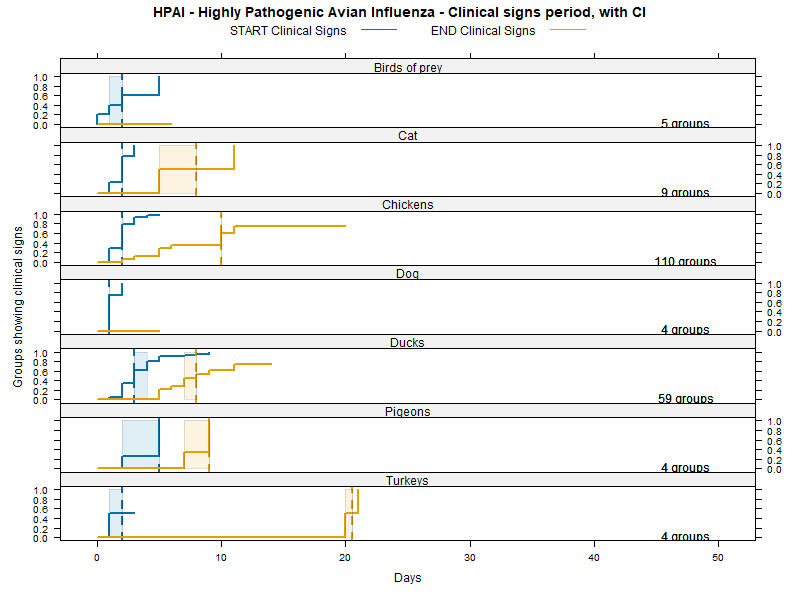META-ANALYSIS
Duration of clinical signs: Meta-analysis accounting for censoring
Kaplan-Meier curves were fit to the data,in order to estimate confidence intervals (CI) and interquartile ranges (IQ) that explicitly take into account the data censoring issue (lack of information about true maximum when experiments ended while the agent was still detectable). The results are the survival curves shown below, first with confidence intervals (parametric assumption), and then with interquartile ranges (non-parametric). Further below you will find a table with the exact calculated CI and IQ.
Kaplan-Meier curves with parametric Confidence Intervals

Kaplan-Meier curves with Inter-Quartile Intervals

Duration of clinical signs: Calculated confidence interval and interquartile ranges accounting for censoring
LCL and UCL stand for the lower and upper control limit of a 95% confidence interval accounting for censoring (lack of information about true maximum when experiments ended while the agent was still detectable).
N.groups is the number of animal groups from which experimental infection data was available.